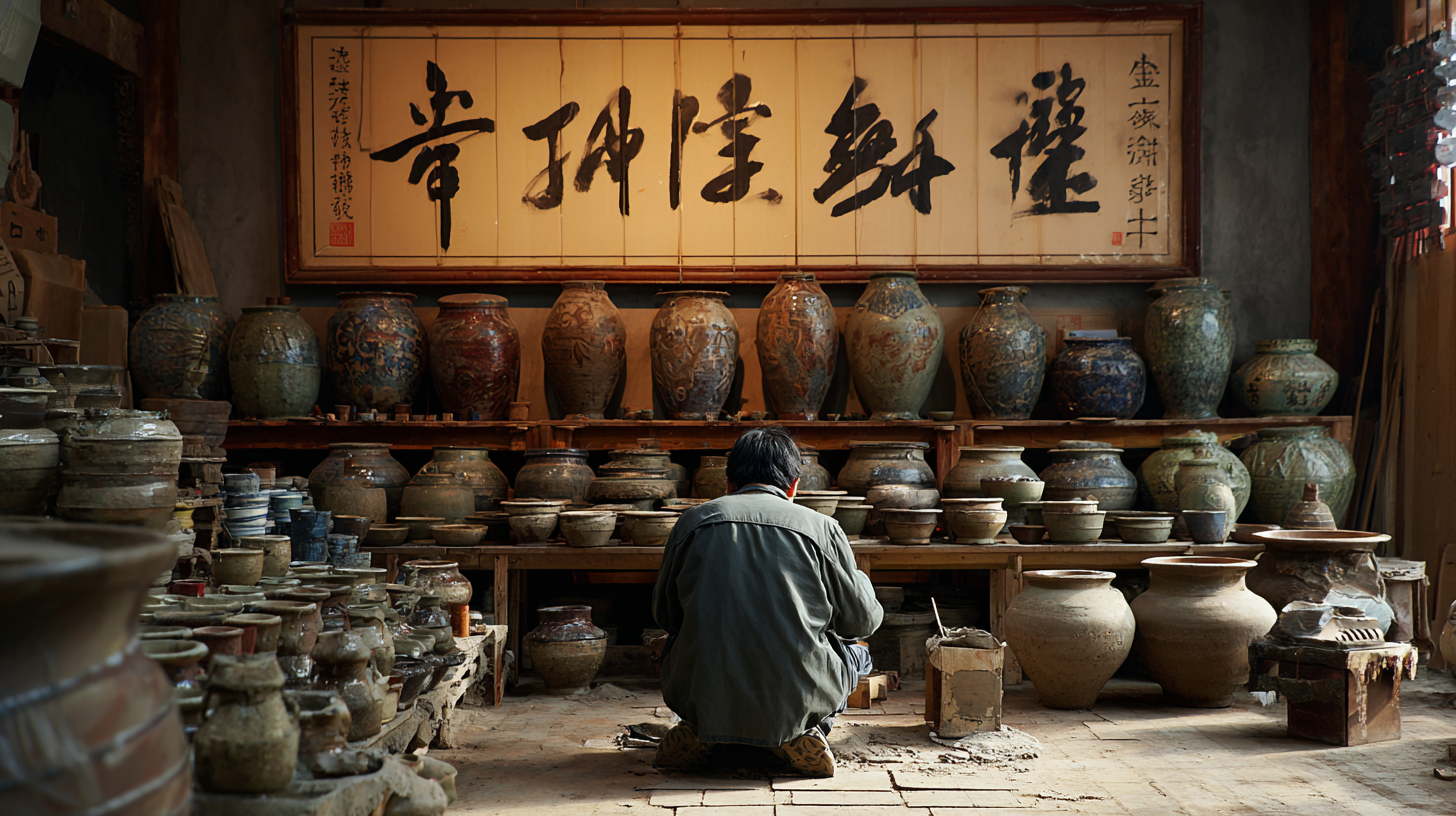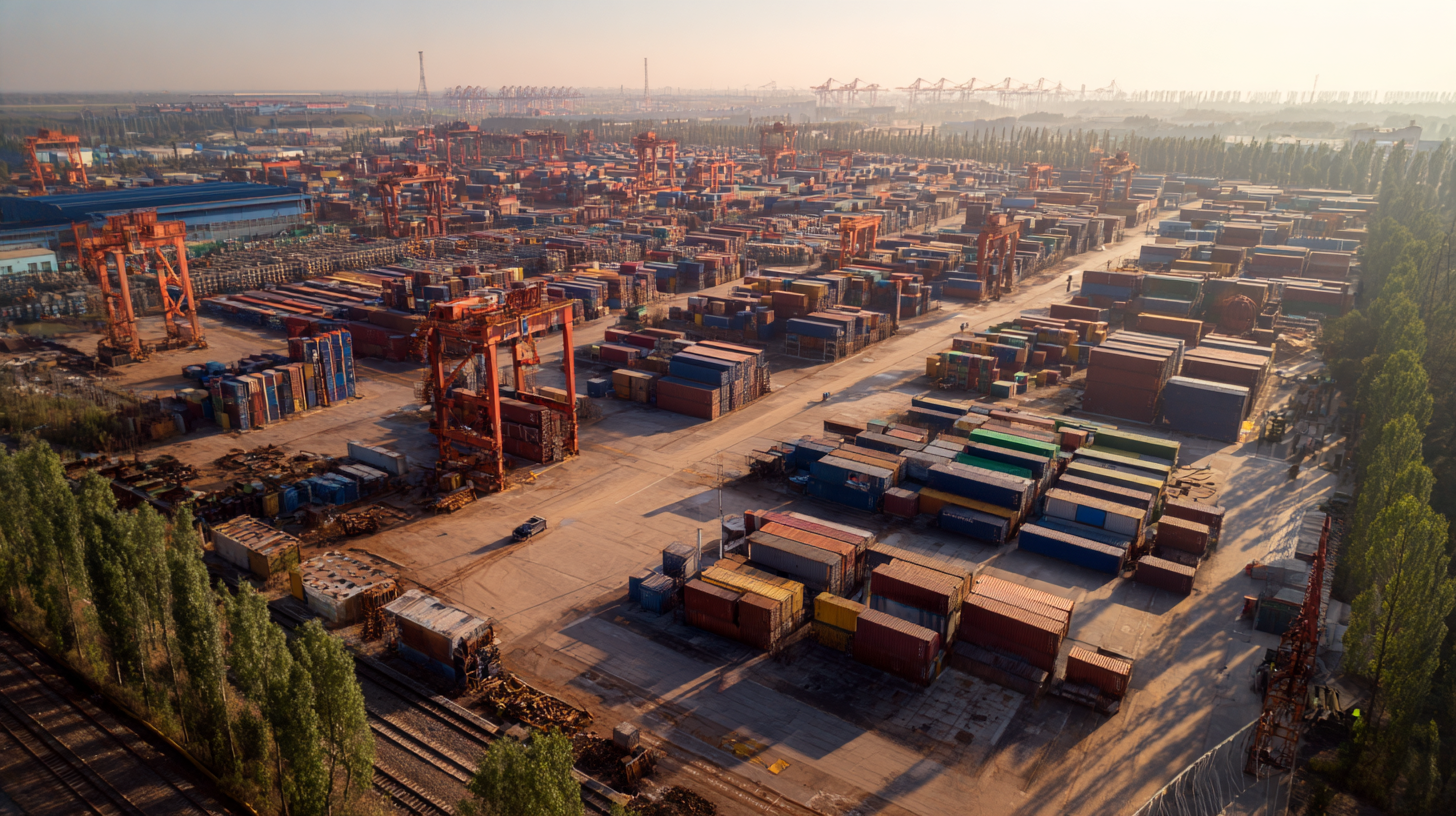Discover the Finest Chinese Manufacturing Excellence through Top Global Suppliers
In today's rapidly evolving industrial landscape, the emergence of advanced technologies and innovative practices in manufacturing has redefined the benchmarks of excellence. As we look ahead to the trends that will shape the industry by 2025, it becomes evident that top global suppliers play a pivotal role in driving this transformation. These suppliers not only provide the essential materials and components needed for production but also embody the cutting-edge methodologies and sustainable practices that define modern manufacturing.
By collaborating with skilled suppliers, businesses can harness the full potential of technological advancements, ensuring efficiency and quality in their operations. This blog will explore how to navigate the intricate web of global supply chains, highlighting the imperative to choose suppliers who exemplify manufacturing excellence while embracing the trends that will soon dominate the industry.
Understanding Chinese Manufacturing: Key Statistics and Trends
Chinese manufacturing continues to be a pivotal component of the global economy, demonstrating remarkable resilience even amid shifting trade dynamics. A recent report states that the GDP growth rate in China is projected to be 5.0% in 2024 and around 3.95% in 2025, underscoring a steady economic foundation. Moreover, nearly half of China's workforce is engaged in the service sector, reflecting a gradual but significant transformation within the country's economic landscape. As businesses explore the recovery phase post-pandemic, understanding these trends becomes crucial for navigating supply chain strategies effectively.
**Tip:** For manufacturers looking to diversify their supply chains, paying attention to growth trends in ASEAN countries is essential, especially as these regions become attractive alternatives to China for Foreign Direct Investment (FDI).
Furthermore, the manufacturing sector is entering a new era dominated by technology, particularly with the rise of AI and machine learning applications. These technologies are reshaping production processes, enhancing efficiency, and driving innovation. As one study indicates, electric vehicle sales neared 14 million units in 2023, with an impressive 95% of sales stemming from China, Europe, and the U.S., exemplifying the rapid evolution within manufacturing sectors globally.
**Tip:** Companies should leverage data science trends to analyze market demands and consumer preferences effectively, ensuring they remain competitive in a fast-evolving environment.
Exploring Global Supplier Partnerships: Benefits for Manufacturers
In today's rapidly evolving marketplace, forming partnerships with global suppliers offers
numerous advantages for manufacturers, especially those keen on tapping into the wealth of insights provided by small and medium-sized enterprises (SMEs). The increasing global influence of these enterprises presents unique opportunities to enhance productivity and foster innovation. Collaborating with diverse suppliers allows manufacturers to access fresh ideas and services that often lead to improved operational efficiency and cost savings.

Moreover, strategic alliances in procurement can empower manufacturers to build
resilient supply chains that withstand the fluctuations of the global economy. As demonstrated by industry leaders embracing partnership dynamics, focusing on inclusive procurement practices not only bolsters economic impacts but also cultivates long-term relationships that prioritize ethical practices and employee welfare. By harnessing the strengths of various suppliers through collaboration, manufacturers can unlock new avenues for growth and sustainability, paving the way for a more robust manufacturing landscape.
Quality Control in Chinese Manufacturing: Best Practices and Standards
Quality control in Chinese manufacturing has been a pivotal factor in establishing the country's reputation as a global manufacturing powerhouse. According to a report by McKinsey & Company, the manufacturing sector in China is expected to grow to $5 trillion by 2030, emphasizing the need for robust quality control systems to maintain competitiveness. Top suppliers are adopting best practices such as Six Sigma and Total Quality Management (TQM), which have been shown to reduce defects by up to 50% and enhance overall production efficiency.
Incorporating international standards, such as ISO 9001, has also played a critical role in elevating quality assurance processes among Chinese manufacturers. A study conducted by the China Certification and Accreditation Association indicated that over 60% of leading manufacturers now prioritize compliance with international quality standards. By focusing on rigorous quality inspection protocols and continuous improvement processes, these suppliers are not only ensuring product reliability but also increasing consumer trust in their offerings. As a result, Chinese manufacturers are increasingly poised to meet the high expectations of global markets, paving the way for sustainable growth.
Emerging Technologies in Chinese Manufacturing: A Competitive Edge
 In recent years, emerging technologies have revolutionized the landscape of Chinese manufacturing, equipping top global suppliers with a competitive edge. Automation and artificial intelligence have emerged as vital components of this transformation, enabling companies to enhance efficiency, reduce costs, and improve product quality. This shift towards smart manufacturing is not just a trend; it is a strategic move towards sustainable growth in a global market that demands innovation.
In recent years, emerging technologies have revolutionized the landscape of Chinese manufacturing, equipping top global suppliers with a competitive edge. Automation and artificial intelligence have emerged as vital components of this transformation, enabling companies to enhance efficiency, reduce costs, and improve product quality. This shift towards smart manufacturing is not just a trend; it is a strategic move towards sustainable growth in a global market that demands innovation.
One effective tip for companies looking to leverage these advancements is to invest in training programs for employees. As technology evolves, a well-trained workforce can adapt to new tools and processes, ensuring that the company remains at the forefront of manufacturing excellence. Additionally, collaborating with tech startups can provide access to cutting-edge solutions and innovative practices that drive operational efficiency.
Another important consideration is the adoption of data analytics. By harnessing the power of big data, manufacturers can gain valuable insights into supply chain dynamics and consumer behavior. This data-driven approach allows for more informed decision-making and can help companies anticipate market trends, ultimately leading to a stronger competitive position in the global landscape.
Sustainability in Chinese Manufacturing: Meeting Global Standards and Demands
Sustainability has become a cornerstone of modern manufacturing, and Chinese manufacturers are rising to the challenge, ensuring that their practices meet global standards and demands. As industries worldwide increasingly prioritize eco-friendly operations, Chinese suppliers are adapting to these trends by implementing sustainable practices in their production processes. This transformation not only helps in reducing their carbon footprint but also enhances their competitive edge in the global market.
Tips for manufacturers seeking to enhance sustainability include investing in renewable energy sources, such as solar and wind, to power their operations. Additionally, adopting a circular economy approach by reusing materials and minimizing waste can lead to significant reductions in environmental impact. Collaborating with international organizations can also provide insights into best practices and help align operations with international sustainability benchmarks.
Another key aspect is transparency in supply chain management. Encouraging suppliers to disclose their sustainability practices not only builds trust with customers but also helps in identifying areas that require improvement. By prioritizing these strategies, Chinese manufacturers can not only meet but exceed global sustainability standards, fostering a greener future for the manufacturing sector.
Chinese Manufacturing Sustainability by Sector




 In recent years,
In recent years, 